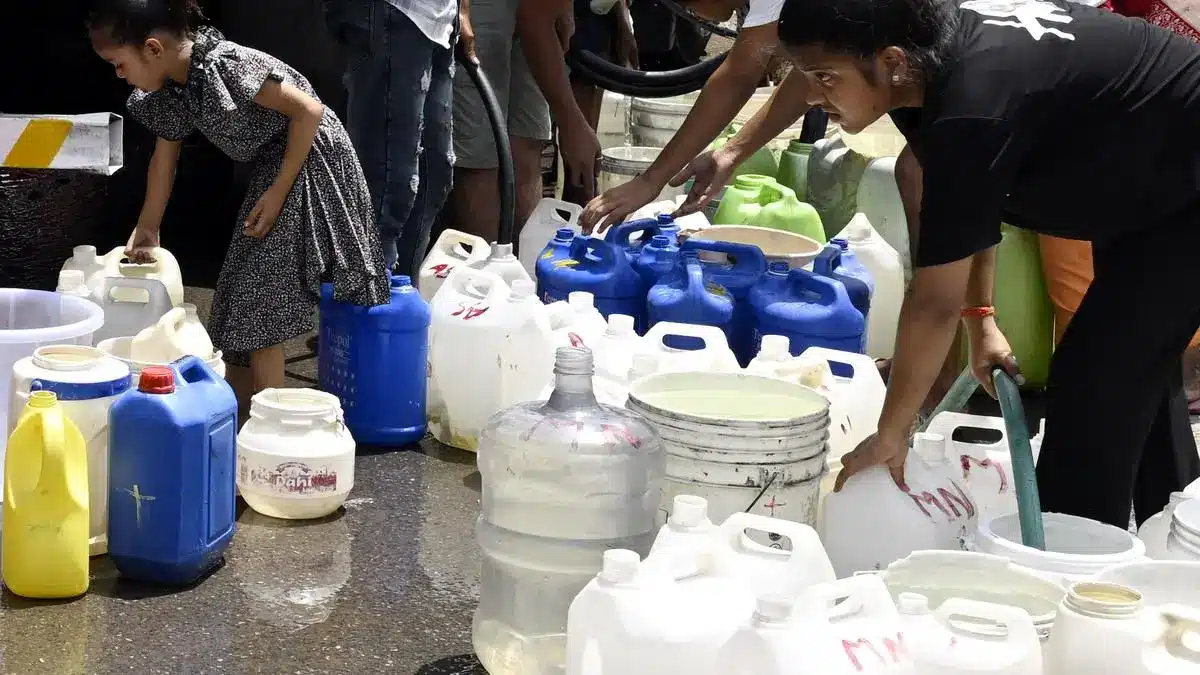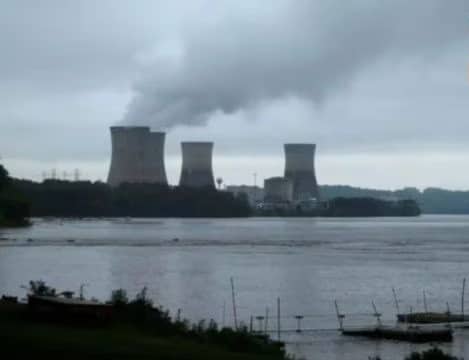What’s in today’s article?
- Why in News?
- Where is the Water in Delhi Coming From, and Water Stress in Delhi?
- Reasons for Water Scarcity in Delhi
- Challenges Posed by Water Scarcity
- What are the Solutions to Address Water Scarcity?
Why in News?
- The Supreme Court directed the Himachal Pradesh government to release 137 cusecs of water it has in surplus and asked Haryana to do the needful to resolve the drinking water crisis in Delhi.
- This came after the AAP government in Delhi had approached the SC (alleging the BJP-government in Haryana for stopping Yamuna’s water supply), amidst a surge in water demand during prolonged heatwave.
Where is the Water in Delhi Coming From, and Water Stress in Delhi?
- Delhi gets most of its water from the Yamuna, Ravi-Beas and Ganga rivers.
- From the Ganga, via the Upper Ganga Canal in UP, Delhi receives 470 cusecs/ roughly 254 million gallons per day (MGD) of water.
- Two channels (carrier lined channel (CLC) Munak and the Delhi sub-branch (DSB) canals) entering Delhi from Haryana supply Delhi (1094 cusecs) with water from the Yamuna and Ravi-Beas rivers.
- The Delhi Jal Board (DJB) also takes water directly from the Yamuna and supplements its river-water supply with ground water drawn from Delhi’s tubewells and wells.
- According to the Composite Water Management Index released by NITI Aayog in 2019, five of the world’s 20 largest cities under water stress are in India, with Delhi being second on the list.
Reasons for Water Scarcity in Delhi:
- Over-extraction of groundwater: According to the Economic Survey 2023-24, Delhi has a daily water demand of 1,290 MGD, of which the DJB currently produces 1,000 MGD. The gap is met by Delhi’s groundwater reserves.
- Pollution of water sources:
- High ammonia levels (more than 2.5 parts per million) in the Yamuna have long contributed to poor water supply in parts of Delhi.
- Numerous drains and rivulets discharge toxic waste from small and medium industries into the Yamuna river, eventually affecting Delhi’s clean water supply.
- Impact of climate change:
- According to the draft of the Delhi State Action Plan on Climate Change, the city is projected to incur economic losses of Rs 2.75 trillion by 2050 as a result of climate change impacts.
- Rising temperatures and erratic precipitation patterns pose significant challenges to the city’s water supply.
- Inefficient water management:
- The Opposition alleges that the annual water shortage during summers is solely because of the inefficient water management of the state government.
- The Central Water Commission’s inefficient role in managing the three barrages in Wazirabad, ITO, and Okhla indicates poor coordination and transparency among Delhi, Haryana, and Uttar Pradesh governments.
- Inter-state water disputes: Water disputes between Haryana and Delhi have centred around the allocation of water from the Yamuna river. Haryana alleges that Delhi is drawing more water than allocated under various agreements.
- Water treatment plant (WTP) capacity: The WTP in North Delhi’s Wazirabad was functioning below its capacity because the Yamuna did not have enough water (due to deficit rainfalls) for the DJB to draw from the Wazirabad reservoir.
Challenges Posed by Water Scarcity:
- Health issues:
- With the reduced availability of clean water, marginalised communities living in unauthorised colonies often have to rely on unsafe water sources, leading to waterborne diseases.
- Insufficient water supply also hampers the maintenance and cleanliness of public toilets. When water is scarce, sewage systems can fail, which increases the risk of diseases such as cholera.
- Social and economic impact:
- Increased illness due to poor hygiene and sanitation leads to higher healthcare costs for individuals and the government.
- Frequent illnesses impact productivity as people miss work or school, affecting their economic well-being and academic opportunities.
- The dependence on water tankers for domestic needs can be unreliable and costly, leading to further economic strain for the marginalised communities.
What are the Solutions to Address Water Scarcity?
- Water conservation and management:
- Recently, the Delhi government ordered a crackdown on water misuse, authorising inspection teams to fine offenders using pipes to wash cars, allowing water tanks to overflow, and using domestic water supply for construction.
- The teams are also authorised to disconnect illegal water connections at construction sites or commercial establishments.
- To stop waste discharge from entering Yamuna, theNational Green Tribunal (NGT) and the State Pollution Control Boards need to take the initiatives.
- Water rationing strategies must be announced during summer months.
- Technological interventions:
- The DJB, in collaboration with Hitachi India, is using field sensors and smart metres at the Pitampura water distribution network.
- Such technological intervention could enable remote and real-time monitoring and control of plant operations.
- Infrastructure development: The DJB can be more commercially-oriented and customers (households, businesses and industries) should be prepared to pay for the ‘real cost’ of supply. The DJB has recently increased infra charges for new water connections.
- Policy and governance reforms:
- State and city governments should consider water resource availability in the region while creating city plans and providing permits for new establishments.
- They must restrict any development activities that are not sustainable in terms of water management.
- Community participation in rainwater harvesting:
- Delhi’s rainwater harvesting potential amounts to a staggering 907 billion litres annually.
- To effectively implement rooftop rainwater harvesting, various awareness campaigns can be organised at the community level.
Q.1. What is the mechanism in India to resolve Inter-state river water disputes?
According to Article 262 of the Indian constitution, Parliament may by law provide for the adjudication of any dispute with respect to the use, distribution or control of the waters of any inter-State river or river valley.
Q.2. Why is the Yamuna river in Delhi so polluted?
The Yamuna river is most polluted in areas surrounding Delhi, owing to the area’s dense population and high levels of waste. For decades, sections of the Yamuna have been plagued by the dumping of toxic chemicals and untreated sewage.
Source: Delhi water crisis: Supreme Court orders Himachal Pradesh to release 137 cusecs of water to quench Delhi’s thirst | IE | BS
Last updated on December, 2025
→ Check out the latest UPSC Syllabus 2026 here.
→ Join Vajiram & Ravi’s Interview Guidance Programme for expert help to crack your final UPSC stage.
→ UPSC Mains Result 2025 is now out.
→ UPSC Notification 2026 is scheduled to be released on January 14, 2026.
→ UPSC Calendar 2026 is released on 15th May, 2025.
→ The UPSC Vacancy 2025 were released 1129, out of which 979 were for UPSC CSE and remaining 150 are for UPSC IFoS.
→ UPSC Prelims 2026 will be conducted on 24th May, 2026 & UPSC Mains 2026 will be conducted on 21st August 2026.
→ The UPSC Selection Process is of 3 stages-Prelims, Mains and Interview.
→ UPSC Result 2024 is released with latest UPSC Marksheet 2024. Check Now!
→ UPSC Prelims Result 2025 is out now for the CSE held on 25 May 2025.
→ UPSC Toppers List 2024 is released now. Shakti Dubey is UPSC AIR 1 2024 Topper.
→ UPSC Prelims Question Paper 2025 and Unofficial Prelims Answer Key 2025 are available now.
→ UPSC Mains Question Paper 2025 is out for Essay, GS 1, 2, 3 & GS 4.
→ UPSC Mains Indian Language Question Paper 2025 is now out.
→ UPSC Mains Optional Question Paper 2025 is now out.
→ Also check Best IAS Coaching in Delhi

















